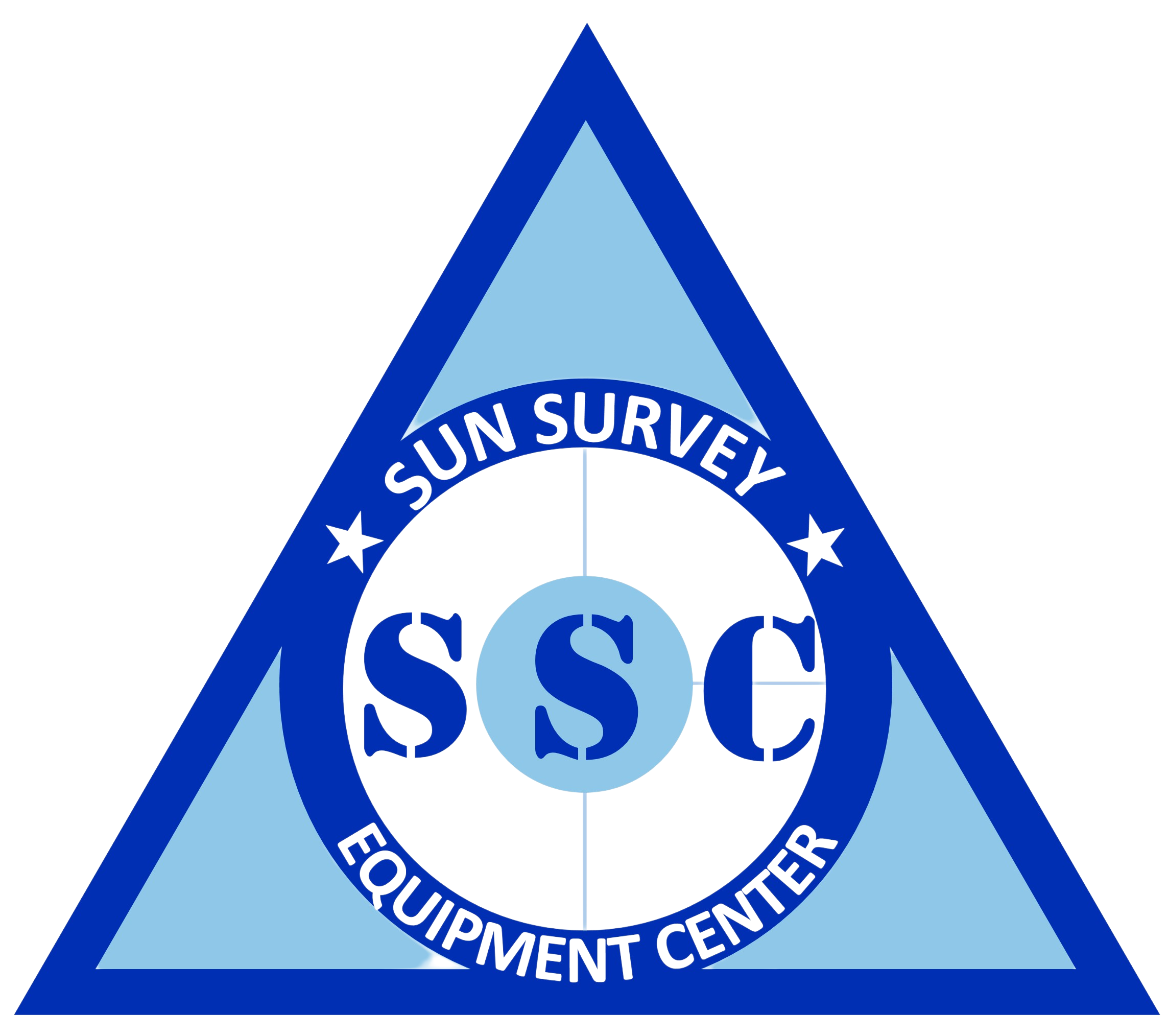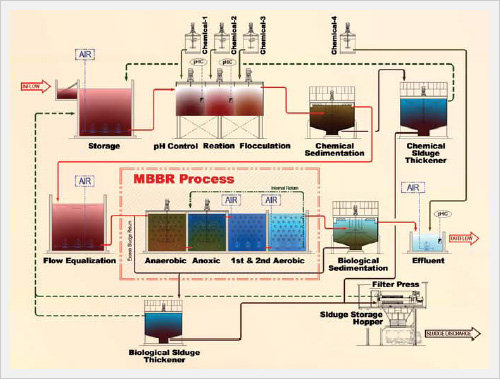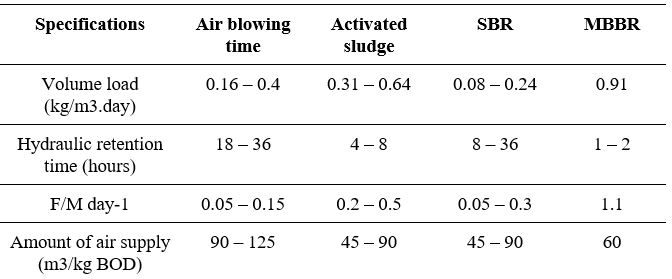Moving Bed Biofilm Reactor (MBBR) is an artificial treatment process that uses materials as a substrate for microorganisms adhesion to grow and develop, a combination of traditional Aerotank and aerobic biofilter.
A. Introduce technology
MBBR is the latest technology in the field of wastewater treatment because of its space-saving and high processing efficiency. Similar to traditional Aerotank, the technology requires aerobic and anoxic MBBR to ensure nitrogen treatment in wastewater. The volume of the MBBR membrane compared to the surface volume is adjusted appropriately, usually <50% of the tank volume.
So, what advantages does MBBR have compared to other technologies?
Here are 8 advantages of MBBR technology
1. Sustainable microflora: the microorganisms create a protective environment for the biofilm so that the micro-organism on the substrate surface is easy to recover.
2. Withstand high organic loads, 2,000-10,000 gBOD / m3day and 2,000-15,000 gCOD / m3day
3. BOD removal efficiency of up to 90%
4. Saving 30-40% of the tank area compared to the activated sludge technology.
5. Easy to control the system, can add Biofilm media according to pollutant load and wastewater flow.
6. Easy to operate, easy to upgrade
7. Save energy, save area
8. Nitrogen removal in wastewater.
B. Scope of application
Applications for most types of wastewater with organic pollution such as domestic wastewater, health care, seafood production, food processing, dyeing, etc.
There are 2 types of MBBR tanks: anoxic and aerobic MBBR to ensure the treatment of nitrogen in wastewater.
C. Design parameters
D. Biological media _ integral role
The main factor in this treatment is the dynamic media with a biofilm film on the surface. The substrates are designed in such a way that the surface area is large to create the optimal conditions for microbial activity on the substrate.
The media have a lower density than water, and each media has a different density depending on the material that makes it. An important condition of this process is the density of the substrate in the tank, the density of 25 ~ 50%, a maximum of 67% of the tank area is the best for dynamic media.
In addition to the above factors, the film thickness is also a measure of treatment efficiency because, in every process of a biological film treatment, the dispersion of nutrients (pollutants) inside and outside the film is greatly affected. to the film thickness
Properties of media in MBBR tanks
- The most characteristic is the high hydrophobicity, which helps the ability to sell biological adhesive high.
- Good biofilm quality, difficult to fall off the material
- Treatment of nitrogen and phosphorus in wastewater: NH3-N: 98 ~ 99%, Total nitrogen: 80 ~ 85%; Total phosphorus: 70 ~ 75%
- Occupy little volume
- No clogged mud for extended periods of time
- The physical efficiency is 30 ~ 50% higher than that of activated sludge technology
- Can drop directly in the aerobic and anoxic tank
- Long life, no loss
- Use for all tanks of different shapes
E. Comparison of MBBR with some other technology
a. Aerotank (aerobic biological tank) and MBBR
b. Compare the design specifications of MBBR and other technologies






